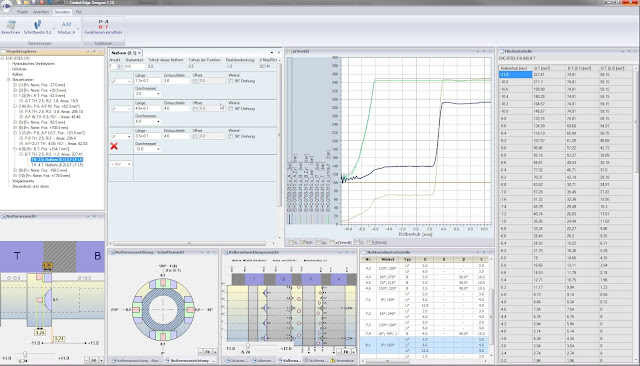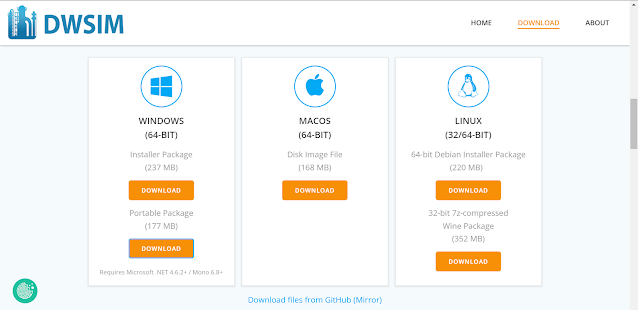The 9 best open-source tools for process simulation in chemical engineering.
An expert opinion on the top open-source software for chemical engineering.
1. Pyomo: https://www.pyomo.org/
It is a Python-based open-source software package that supports a diverse set of optimization capabilities for formulating, solving, and analyzing optimization models. Pyomo's modeling objects are embedded within a full-featured high-level programming language providing a rich set of supporting libraries, which distinguishes Pyomo from other algebraic modeling languages like AMPL, AIMMS, and GAMS.
It can model the problems from core subjects such as CRE, Process Control, Heat Transfer, and even Mass Transfer as a matter of fact. Pyomo (Phyton) software now competes with MATLAB when it comes to symbolic mathematics and calculus.
 |
| Image: https://www.pyomo.org/ | Git-hub.jpeg |
Pyomo supports a wide range of problem types, including Linear programming
Quadratic programming
Nonlinear programming
Bilevel programming
Mathematical programs with equilibrium constraints etc.
2. Open Modelica: https://openmodelica.org/
It allows equation models and Modelica functions to be compiled into efficient C code combined with a library of utility functions, a run-time library, and a numerical DAE solver. Modelica has established itself as a formidable simulation language. It can be used for both steady-state and dynamic systems, offering flexibility across a range of applications. Since all the equations are solved at once, there's no need to worry about whether an unknown variable is an input or output—it handles them seamlessly.
 |
| Image:https://openmodelica.org/ Industrial |
Below are six key components of OpenModelica, which uses this versatile language for https://om.fossee.in/features complex system modeling and simulation.
- Open Modelica Compiler (OMC)
- Open Modelica Connection Editor
- Open Modelica Shell (OMShell)
- Open Modelica Notebook (OM Notebook)
- Open Modelica Python (OM Python)
- Modelica Development Tooling (MDT)
Open Modelica Supports Windows, Linux, Mac OS
OPM Windows Download guide: https://openmodelica.org/download/download-windows/
OPM LINUX Download guide: https://openmodelica.org/download/download-linux/
OPM Mac OS Download guide: https://openmodelica.org/download/download-mac/
3. Dyssol: https://www.dyssoltec.com/
Dyssol is a modeling framework for the dynamic flowsheet simulation of processes designed for handling particulate materials.
The simulation of solid processes is an incredibly complex task. The biggest challenge lies in the description of the particles themselves because each one is unique and has its size, shape, composition, and other interdependent properties.
 |
| Image:https://www.dyssoltec.com/the-software |GUI framework |
- Dynamic Processes:
The significance of dynamic process simulations in ensuring effective plant design and high-quality products is growing. Dyssol can model processes that rely on time.
 |
| Image:https://www.dyssoltec.com/the-software|Flower sheet. |
- Custom Model Maker:
Numerous processes are very individualized and require a precise mathematical explanation. You may quickly implement, test, and verify your models in Dyssol with the Model Maker. Just a little C++ expertise is needed for this.
Dyssol supports Windows & Linux. https://github.com/DyssolTEC/Dyssol-open
4. DWSIM:
 |
| Image: DWSIM/ (Mac OS) |
5. COCO Simulator +CHEM Sep: https://www.cocosimulator.org
The COCO Simulator is a free, non-commercial, graphical, modular, and conforming simulation environment for modeling steady-state sequential processes. Originally developed as a testing environment for CAPE-OPEN modeling tools, it is now available for free to students.
The open flowsheet modeling environment enables users to add new unit operations.
The COCO Simulator creates a graphical Process Flow Diagram (PFD) to define the simulated process. The CAPE-OPEN standard enables the interoperability of process modeling software. The COCO thermodynamic library "TEA" includes a database of chemical compounds.
 |
| Image/COCO Simulator.org |
COCO includes the LITE version of COSMO Therm, an activity co-efficient model based on Abinito quantum chemistry methods. The simulator entails a set of units operating such as steam splitters/mixers heat exchangers, compressors, pumps, and reactors.
 |
| IMAGE/(Sample-flow sheet)/COCO Simulator.org |
COCO simulator support in Windows only
COCO Windows download guide: COCO - the CAPE-OPEN to CAPE-OPEN simulator (cocosimulator.org)
6.BioSTEAM:
https://biosteam.readthedocs.io/en/latest/index.html#
BioSTEAM The biorefinery simulation, and techno-economic analysis modules is an open-source steady process in Python that enables (TEA) a fast and flexible framework.
BioSTEAM aims to evaluate the landscape of design decisions and scenarios for conceptual and emerging technologies.
BioSTEAM closely match benchmark designs modeled in proprietary software (SuperPro Designer, Aspen Plus). Through the automation of unit operation sizing and characterization of utility requirements, process waste streams, and make-up water usage, BioSTEAM also generates data needed for environmental sustainability analyses (e.g., via life cycle assessment).
 |
| Image/Github-thermosteam |
The applicability of BioSTEAM is demonstrated here in the context of the co-production of biodiesel and ethanol from lipid-cane, and the production of 2nd generation ethanol from corn stover.
BioSTEAM supports Windows, Mac, and Linux. User guide
https://biosteam.readthedocs.io/en/latest/tutorial/index.html
https://biosteam.readthedocs.io/en/latest/index.html#
7. ASCEND: https://ascend4.org/
8. Advanced Process Monitor (AP Monitor):
APMONITOR is a versatile modeling language for differential algebraic equations. It’s capable of solving a wide range of optimization tasks, including linear and nonlinear programming and dynamic simulations. APMonitor offers a web-based service and a local server option, giving you flexibility in problem-solving.
 |
| Image/https://apmonitor.com/ |
9. Advanced Simulation Library (ASL):
ASL is a high-performance multi physics simulation platform designed for intensive computation. It supports hardware acceleration and massively parallel architectures, making it ideal for complex simulations. ASL is especially useful for computational fluid dynamics and is distributed under the GNU Affero General Public License, allowing you to use it for free.
Conclusion:
These nine open-source technologies are transforming the field of chemical engineering. Engineers can choose the ideal instrument to satisfy their process simulation requirements thanks to a wide range of platforms, features, and user-friendly interfaces. Whether you prefer steady-state or dynamic simulations, these technologies provide a reliable answer to any of your chemical engineering problems.



Comments
Post a Comment